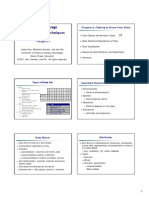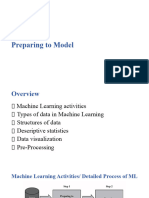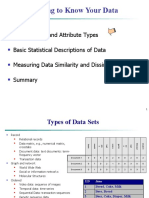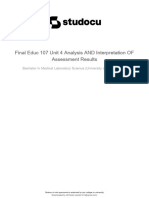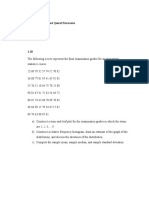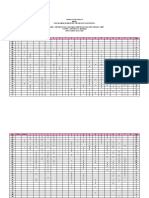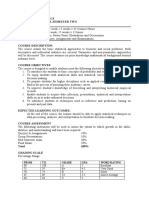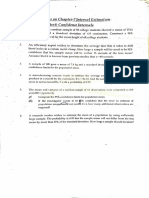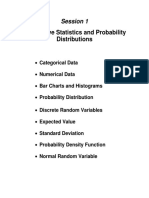0% found this document useful (0 votes)
47 views34 pages02data Part2
Here are the steps to calculate the standard deviation:
1) Calculate the mean (sum of all scores / total number of scores)
2) Calculate the deviation of each score from the mean (X - Mean)
3) Multiply the deviation by the frequency
4) Sum the results from step 3
5) Divide the result from step 4 by the total number of scores
6) Take the square root of the result from step 5
The standard deviation is the square root result, which measures how dispersed the scores are from the mean.
Uploaded by
baigsalman251Copyright
© © All Rights Reserved
We take content rights seriously. If you suspect this is your content, claim it here.
Available Formats
Download as PPTX, PDF, TXT or read online on Scribd
0% found this document useful (0 votes)
47 views34 pages02data Part2
Here are the steps to calculate the standard deviation:
1) Calculate the mean (sum of all scores / total number of scores)
2) Calculate the deviation of each score from the mean (X - Mean)
3) Multiply the deviation by the frequency
4) Sum the results from step 3
5) Divide the result from step 4 by the total number of scores
6) Take the square root of the result from step 5
The standard deviation is the square root result, which measures how dispersed the scores are from the mean.
Uploaded by
baigsalman251Copyright
© © All Rights Reserved
We take content rights seriously. If you suspect this is your content, claim it here.
Available Formats
Download as PPTX, PDF, TXT or read online on Scribd
/ 34





















